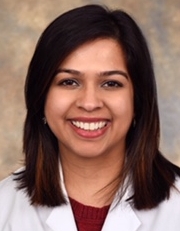Choosing a Cancer Treatment Plan
The ENT specialist knew Rodney needed care from UC Health. He referred him to Dr. Yash Patil, MD, an Otolaryngologist/Head and Neck Surgeon at UC Gardner Neuroscience Institute and the director of the Adult Airway Reconstruction Program. Under Dr. Patil's compassionate care, Rodney faced his diagnosis with unwavering resolve.
“Dr. Patil ordered another biopsy to examine my throat. The biopsy came back, identifying [stage 4] cancer was surely located on my voice box. He shared the options of radiation, chemotherapy, and surgery. Before I made my final decision, I was advised I needed to meet with the radiation and chemotherapy staff to receive knowledge of all possible options, which I did. My final decision was to have surgery to attempt to remove ALL cancer on my voice box.”
Laryngectomy: A New Beginning
After careful consideration, Rodney chose to undergo a surgical procedure known as a laryngectomy to remove the cancerous cells from his voice box. Before surgery, Rodney had extensive counseling about how he would learn to speak and eat normally again. On May 25, 2023, Rodney successfully underwent a four-hour laryngectomy and free flap reconstruction. During the surgery, his cancer was completely removed, and his swallowing tube was rebuilt.
The postoperative phase was challenging. For seven days post-surgery, Rodney remained in the intensive care unit with a feeding tube that would stay with him temporarily.
“The feeding tube was with me for two weeks. I understood I needed to get food in my system while my throat healed, so I pushed through this part of my recovery, knowing that it was only temporary and soon I would be eating food through my mouth (I could not wait),” recalls Rodney.
Recovery, Rehabilitation and Regaining a Voice
In the initial few weeks, Rodney relied on a whiteboard and an electrolarynx, a battery-operated machine that produces sound to create a voice to communicate. Because of his progress and determination, Rodney received a voice prosthesis in June 2023. This communication device is a surgically implanted one-way valve that allows airflow between the trachea and the esophagus after laryngectomy.
Weekly visits to his medical team, led by Dr. Patil, became Rodney's new routine. With determination and the expert guidance of Farah Kaval and Angela Terese Dionisio, speech pathologists at the University of Cincinnati Voice and Swallowing Center, Rodney embarked on a path forward to reclaim his voice, one syllable at a time, without the aid of an electrolarynx. Though setbacks were inevitable, Rodney's resolve remained unshaken, and he remains cancer-free.
“It was amazing the first time Farah asked me to speak with my voice during one of the sessions. I said, "Thank you, Jesus," followed by my name, Rodney.”
“Rodney was one of those remarkable survivors who takes every challenge in stride. He always came to all his therapy appointments with a smile on his face, ready to learn more and take on the challenges that would help him talk with his new voice again. He became independent with his care very quickly, allowing him to return to his work and family life,” said Farah.




